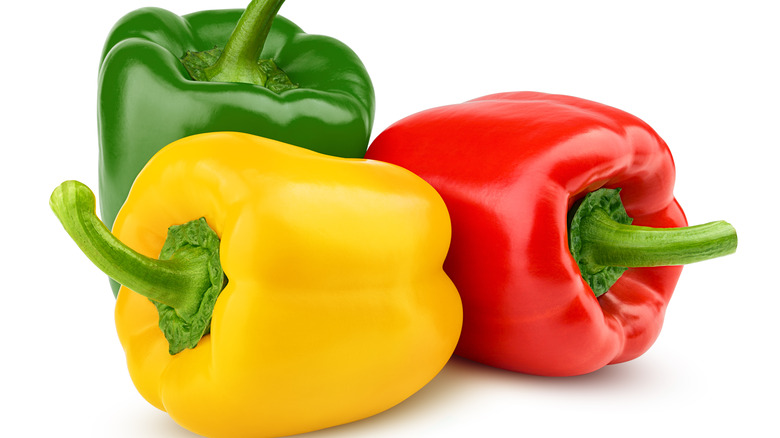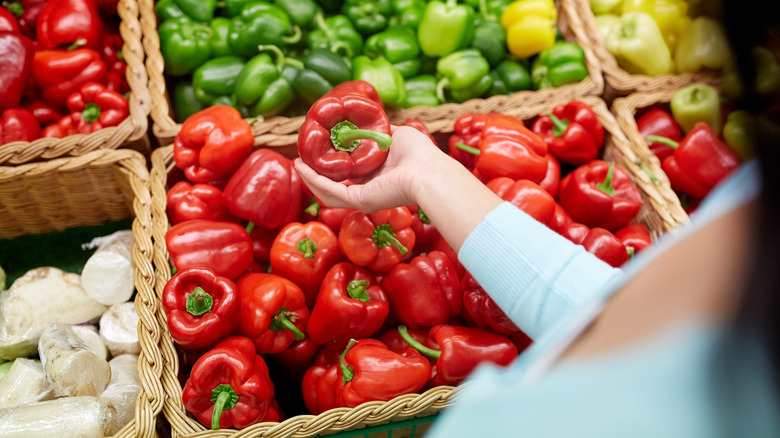What To Look For When Purchasing Bell Peppers
As increased food prices continue to give many of us sticker shock at the grocery store, one effective strategy for cutting your household food budget is making sure you actually use everything you purchase. Despite the best of intentions, Americans waste a staggering amount of food, according to Feeding America, which points out that roughly 40% of all the food in the U.S. is thrown away.
In addition to strategies shared by the UN, like planning meals more carefully, composting, and not over-ordering at restaurants, one of the best and easiest ways to reduce food waste is to purchase healthy produce and store it properly. As anyone who's ever had to throw out spoiled produce knows, however, it's not always as easy as you think. Some fruits and vegetables stay fresh longer than others, and keeping them in peak condition may require different measures.
For the delicious and versatile bell pepper, for example, we know that storing it in the refrigerator is the best way to ensure you have fresh goods for stuffed pepper skillet dinner or hearty red pepper soup. But do you know how to pick the best bell peppers, ensuring you're starting off with the veggies in prime condition?
What should you look for to pick the perfect pepper?
Given that a perfect pepper will keep on the kitchen counter for only a day or two, according to Live Simply, it's important to know what to shop for to maximize the usefulness of your stoplight-colored red, yellow, and green bell peppers. The best produce should have a firm, glossy exterior, free of any dark or soft spots. In addition, your perfect pepper should have brilliant color, and the skin should be smooth, not wrinkled. Live Simply also recommends that shoppers look for peppers that are relatively heavy for their size as an indicator of freshness.
Should you find yourself with a bell pepper that's past its prime, don't panic! Frugal Upstate has several suggestions for what you can do with a produce that's slightly over the hill. You can, of course, cut out any suspect dark spots and cook up the rest right away. Bell peppers can also be chopped, spread on a baking sheet, and frozen for an hour or so, then packed up to use in any recipe. Bonus tip: bell peppers don't need to be blanched before freezing. They can also be dehydrated, giving you a stable, shelf go-to that's perfect for soups and stews. Red, yellow, or green, your carefully selected bell peppers give you ample options in the kitchen, from scooping up hummus to holding delicious fillings.

